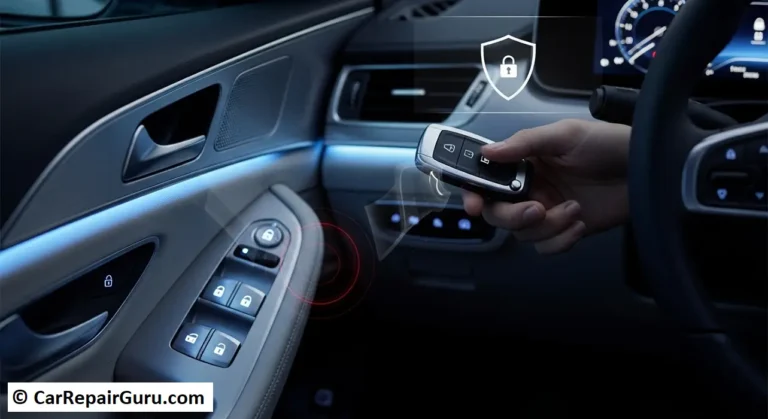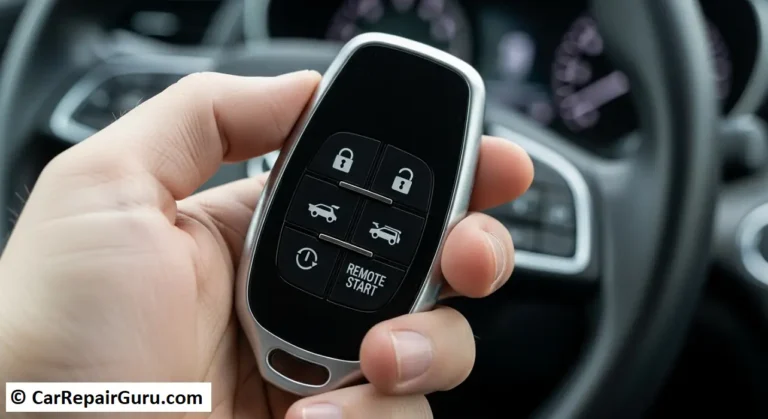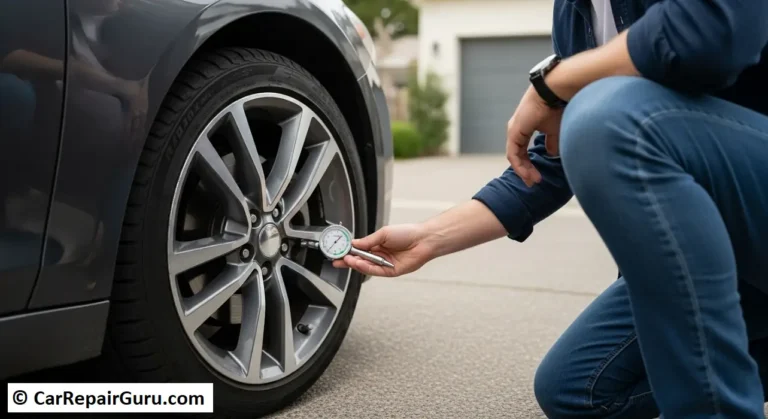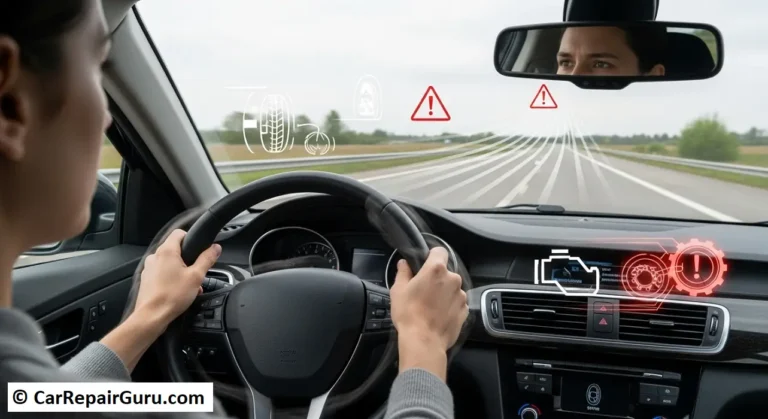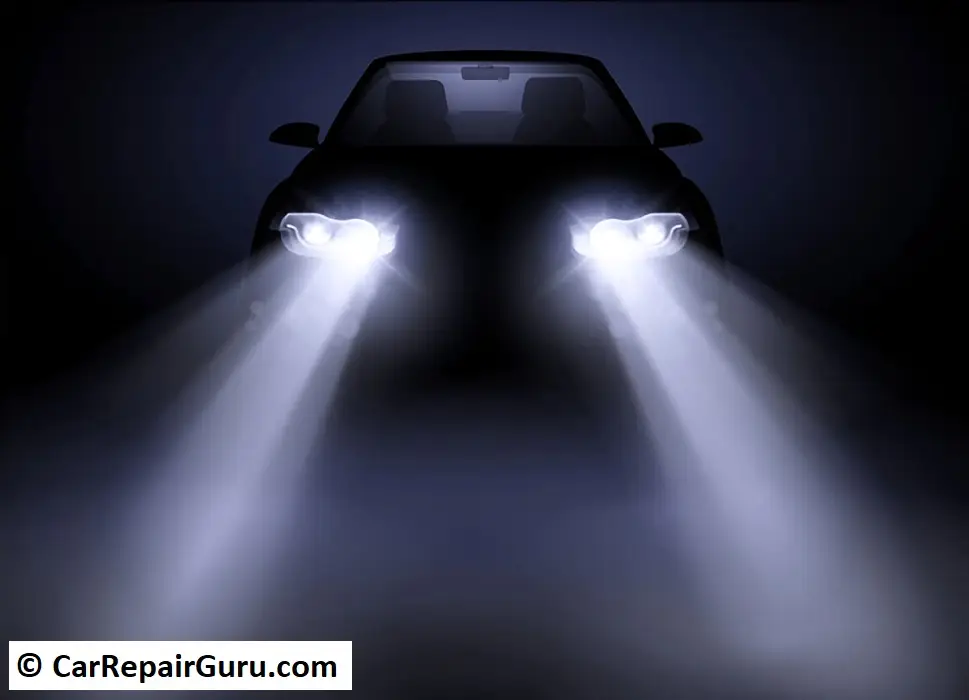
Driving in poor visibility conditions can be challenging and dangerous, which is where fog lights come into play. These specialized vehicle lights are designed to cut through fog, heavy rain, and snow, offering improved visibility for drivers when standard headlights fall short. Positioned lower on the vehicle, fog lights emit a wide, low beam that reduces glare and illuminates the road directly in front of the car.
Unlike regular headlights, which can reflect off particles in the air and create a blinding effect, fog lights ensure a clear path forward. Their purpose is not just to help drivers see the road but also to make vehicles more visible to others in adverse weather conditions.
By providing additional clarity in situations where visibility is reduced, fog lights play a crucial role in preventing accidents, enhancing road safety, and ensuring smoother journeys even in challenging weather.
When and How to Use Fog Lights
Situations Requiring Fog Light Usage
Fog lights are specifically designed for low-visibility situations, such as dense fog, heavy rain, or snow. These conditions scatter light from standard headlights, creating a glare that reduces visibility and makes driving more hazardous. Fog lights are positioned lower on the vehicle and emit a focused, wide beam to minimize glare and illuminate the road immediately ahead. They are most effective during severe weather when visibility drops to less than 100 meters (330 feet).
Guidelines for Turning On and Off Fog Lights
To use fog lights correctly, activate them only in conditions where visibility is significantly impaired. In most vehicles, fog lights are controlled by a separate switch or button, often marked by a symbol resembling a headlight with wavy lines or beams directed downward. Once weather conditions improve and visibility is restored, switch off the fog lights promptly. Using them unnecessarily can create glare for other drivers and may even lead to fines in some areas.
Common Misconceptions and Mistakes
One common misconception is that fog lights can be used as an alternative to headlights at night. This is not only ineffective but can also be illegal. Another mistake is using fog lights in clear weather or in well-lit areas, which can cause unnecessary glare and distract other drivers.
Some drivers also fail to realize that rear fog lights, found on many vehicles, are intended to make your car more visible to others during adverse weather. These should be used sparingly, as their intense brightness can dazzle drivers behind you.
Using fog lights correctly not only ensures your safety but also helps maintain proper driving etiquette, minimizing risks for everyone on the road.
Types of Fog Lights
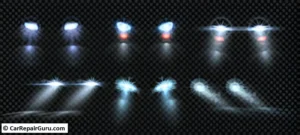
Front vs. Rear Fog Lights: Functions and Differences
Fog lights come in two main types: front fog lights and rear fog lights, each serving a distinct purpose.
- Front Fog Lights: Positioned low on the vehicle’s front bumper, front fog lights are designed to illuminate the road immediately in front of the car. Their wide, short beam helps reduce glare by focusing the light closer to the ground. This makes them especially useful in foggy conditions, heavy rain, or snow, where normal headlights might scatter and cause reflections. Front fog lights are usually white or yellow and can be used alone or in combination with your regular headlights.
- Rear Fog Lights: Located at the rear of the vehicle, rear fog lights are bright and usually red. They serve to increase the visibility of your vehicle to drivers behind you, particularly in heavy fog or rain. While front fog lights help you see the road better, rear fog lights help other drivers see you more clearly, reducing the risk of rear-end collisions in low-visibility situations. However, rear fog lights should only be used when visibility is extremely poor, as their intensity can cause discomfort to drivers following behind you.
Halogen vs. LED Fog Lights: Advantages and Disadvantages
When choosing fog lights, you’ll likely come across two popular options: halogen and LED fog lights. Both have their advantages, but there are key differences.
- Halogen Fog Lights: These are the traditional choice for fog lights. Halogen bulbs are relatively inexpensive, easy to replace, and provide a soft, warm light. However, they tend to consume more power and have a shorter lifespan compared to LEDs. Over time, halogen bulbs can dim, affecting their performance in adverse weather.
- LED Fog Lights: LED fog lights are becoming increasingly popular due to their energy efficiency, longer lifespan, and brighter, whiter light output. LEDs are much more durable and have a faster response time than halogen lights. However, they tend to be more expensive upfront and may require a more complicated installation process. The brighter light can also cause glare if not properly aligned.
Color Variations: White vs. Yellow Fog Lights and Their Effectiveness
Fog lights often come in two main color options: white and yellow, and each color has distinct benefits in different weather conditions.
- White Fog Lights: White fog lights are the most common and provide bright, clear illumination. While effective in general low-visibility situations, they can sometimes reflect off the fog or snow, reducing their effectiveness in extremely foggy conditions.
- Yellow Fog Lights: Yellow fog lights are considered superior in foggy, snowy, or rainy conditions. The yellow light is less likely to scatter, reducing glare and providing better contrast against the fog or precipitation. They are also easier on the eyes, which is why many drivers prefer them for long drives in poor weather. However, yellow fog lights are typically less bright than white lights, so they may not offer as much illumination in clear conditions.
Choosing the right fog lights for your vehicle depends on your driving environment and preferences. Whether you go with front or rear fog lights, halogen or LED bulbs, or white or yellow lighting, ensuring they’re properly used and maintained will make your driving experience safer and more efficient.
Fog Light Symbols and Indicators
Fog light symbols on your vehicle’s dashboard are designed to let you know when the fog lights are activated and help you operate them correctly. Understanding these symbols is crucial for ensuring proper use, especially in low-visibility conditions.
Explanation of Dashboard Fog Light Symbols
- Front Fog Lights Symbol: The icon for front fog lights typically features a headlight beam with three horizontal lines and a downward squiggle. This design indicates that the light is directed low and wide to cut through fog without causing glare.
- Rear Fog Lights Symbol: The rear fog lights symbol is similar but usually points to the left, with vertical lines instead of horizontal ones. This signifies the rear-facing light that makes your vehicle more visible to drivers behind you.
Both symbols illuminate on your dashboard when the respective fog lights are activated.
How to Identify and Understand Fog Light Indicators
To locate and activate your fog lights, check your vehicle’s user manual or inspect the light controls. Most vehicles have a dedicated switch or button for fog lights, often found on the headlight stalk, dashboard, or center console.
Pay attention to the indicator lights on the dashboard. If the symbols are illuminated, it means the fog lights are active. Always remember to switch them off once visibility improves to avoid dazzling other drivers and draining your vehicle’s battery unnecessarily. Proper understanding and use of these indicators ensure safety and compliance with driving regulations.
Legal Regulations and Penalties

Fog light usage is governed by specific laws that vary by country or region but generally emphasize using fog lights only during low-visibility conditions. These regulations aim to prevent misuse that can cause glare or distraction to other drivers.
Overview of Laws Regarding Fog Light Usage
In most regions, fog lights are permitted only when visibility is severely reduced, such as in fog, heavy rain, or snow. Many laws explicitly prohibit their use in clear weather or well-lit urban areas, as the bright beams can dazzle other drivers and pose a safety risk. For example, in the UK, fog lights may only be used when visibility is below 100 meters (about 330 feet). In the US, state-specific laws govern fog light usage, often as a supplement to low-beam headlights.
Potential Fines and Penalties for Misuse of Fog Lights
Misusing fog lights can lead to fines, penalties, or even legal action. Common violations include using fog lights unnecessarily, failing to switch them off when conditions improve, or improperly installing aftermarket fog lights that do not meet legal standards. Fines can range from $20 to $100 or more, depending on the jurisdiction.
Importance of Adhering to Legal Guidelines
Following legal guidelines ensures your safety and the safety of others on the road. Proper fog light usage reduces the risk of glare and distraction, maintaining smooth traffic flow during adverse conditions. Adherence to these rules also helps you avoid fines and demonstrates responsible driving habits. Staying informed about your local regulations is essential to comply with the law while ensuring safe and effective use of fog lights.
Tips for Safe Driving in Foggy Conditions
Driving in foggy conditions requires extra caution and preparation to ensure your safety and that of others on the road. Beyond using fog lights effectively, there are several additional safety measures and best practices to keep in mind.
Additional Safety Measures Beyond Using Fog Lights
- Slow Down: Reduce your speed to allow more time to react to sudden obstacles or changes in traffic. Overdriving your visibility range can lead to accidents.
- Use Low-Beam Headlights: If fog lights aren’t available, low-beam headlights are the next best option. High beams should be avoided, as they can reflect off the fog and impair visibility.
- Keep a Safe Distance: Increase the gap between your car and the vehicle ahead. This provides extra time to respond if the vehicle in front brakes suddenly.
Maintaining Vehicle Readiness for Foggy Weather
- Check Lights and Wipers: Ensure that all your lights, including fog lights, are functioning properly. Replace worn-out wiper blades to maintain clear visibility.
- Clean Windows and Mirrors: Dirty windows can worsen glare and reduce visibility. Regularly clean your windshield, mirrors, and other glass surfaces.
- Inspect Tires: Proper tire traction is critical in wet or foggy conditions. Check tire pressure and tread depth to ensure stability on slippery roads.
Best Practices for Navigating Low-Visibility Situations
- Stay in Your Lane: Use lane markings to guide your path and avoid drifting into other lanes.
- Avoid Sudden Maneuvers: Brake and accelerate gradually to maintain control of your vehicle.
- Stay Alert: Minimize distractions, such as mobile devices, and focus entirely on the road.
By taking these precautions and staying prepared, you can navigate foggy conditions safely and confidently.
Conclusion
Fog lights are an essential safety feature for navigating through challenging weather conditions such as fog, heavy rain, and snow. They enhance visibility by cutting through low-visibility environments, allowing you to see the road clearly and ensuring other drivers can see your vehicle. However, using fog lights appropriately is just as important as having them. Misuse not only compromises safety but can also lead to legal penalties.
By understanding the functions of fog lights, knowing when and how to use them, and adhering to legal guidelines, you can maximize their effectiveness and stay compliant with traffic laws. Additionally, complementing fog light usage with other safety measures, such as maintaining your vehicle and driving cautiously, ensures a safer journey for everyone on the road.
Driving in foggy conditions demands preparation, attentiveness, and respect for others. Proper use of fog lights, combined with safe driving practices, can make a significant difference in reducing risks and preventing accidents. Always remember: safety comes first, and being a responsible driver benefits not only you but everyone around you.
FAQs
Q: Are fog lights necessary for all vehicles?
A: While not mandatory in most vehicles, fog lights are highly recommended for enhancing visibility and safety in adverse weather conditions such as fog, heavy rain, or snow.
Q: Can I install fog lights on my own?
A: Yes, fog light installation can be a DIY project if you have the right tools and follow your vehicle’s manual. However, professional installation is recommended to ensure the lights are properly aligned and compliant with legal standards.
Q: Are LED fog lights better than halogen?
A: LED fog lights are generally better due to their brighter illumination, energy efficiency, and longer lifespan. However, they are often more expensive upfront than halogen lights, which remain a more affordable and reliable option.
Q: Is it illegal to use fog lights when it’s not foggy?
A: Laws vary by region, but in most places, using fog lights in clear conditions is either illegal or discouraged. This is because fog lights can cause unnecessary glare for other drivers, leading to potential safety hazards. Always check your local regulations for proper usage.
